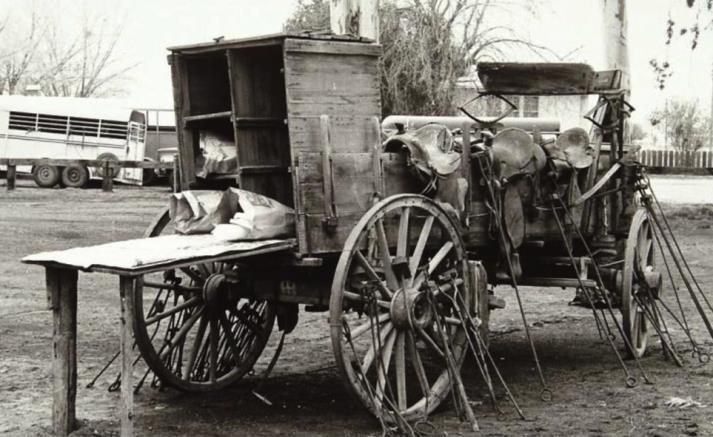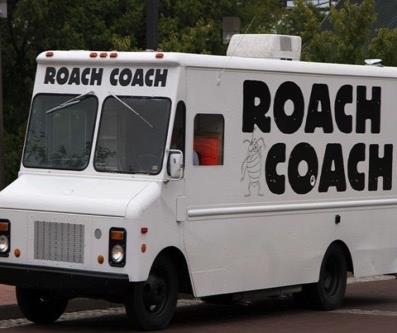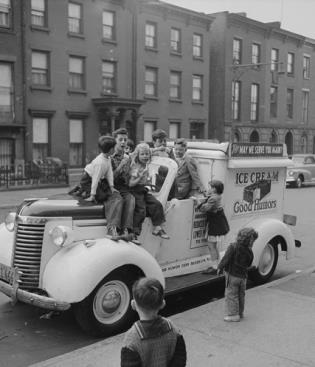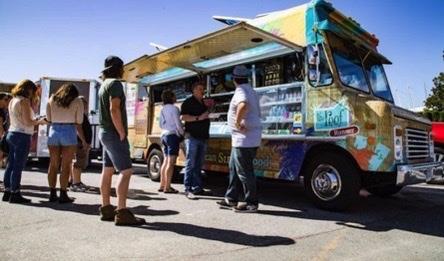
4 minute read
FOOD TRUCK TIME LINE

T R U C K T I M E L I N E
Advertisement

ANCIENT GREEK TIMES
the predecessor of the first push carts date back to the ancient Greek times. These wheeled means of transportation were used by vendors to sell exotic fruits, vegetables and treats to those who were able allow such expenditures (wealthy citizens). It was literally a moving marketplace. This type of sales method was later implemented in thew Roman Empire as well as in the medieval period. (TruckedUpCatering.Com; FTH; Hallman)
1600s and 1700s
The so called "pushcarts" served as a mobile restaurant and market, offering seafood, fruits, vegetables and ethnic dishes. The first pushcarts originated in the urban areas of New York City, Chicago and Boston and were brought in by Dutch settlers. These pushcarts were also used to feed the bluecollar workers during lunchtime for a small amount of money. (ibid) Chuck wagons were invented by Charles Goodnight, an American cattle rancher, who wanted to make the lives of many cattlemen on the prairie easier by feeding them from a wagon, which had every tool to prepare, cook and serve meals. This type of wagon design – which was actually a modified army wagon – quickly made its way to the urban areas of the U.S. around the 1890s. The first hot-dog wagons appeared during the end of the 19th century and were mostly located in front of student dorms or big plants. (ibid)


1917
The invention of automobiles pushed the mobile food industry forward as well. The first mobile canteens, which resemble the modern food trucks, appeared during WW1. The re-designed truck-like vehicles were used to warm up the canned food then serve to the troops in Army bases. This idea spread quickly worldwide, even the Vietnamese Army used similar trucks to feed the soldiers during war time. These mobile canteens are considered as the prototype of today’s modern food trucks. (ibid)

After the pasteurisation of milk in the beginning of the 1990s, the first ice cream trucks were introduced to the market. Thanks to this and to the invention of cooling boxes, eating ice cream - which contained milk as main ingredient – became safe. In the decades before, people who ate ice cream often became ill or even died. What was the reason for that? Milk was not properly cooled down and stored, which led to the quick expiration of it. In the 1970s the first “Taco Truck” was rolling on the streets of Los Angeles. It became very popular and expanded through the county. During this period people started to call these trucks “roach coaches” – word play with the name of the cockroach – mostly because of the missing hygiene and cleanliness. (ibid)
Early 2000s
In order to make food trucks popular again, several laws and regulations in the U.S. were made, which made sure that the food the consumers buy comes from an approved, hygienic and safe environment. To promote the food truck culture food truck awards were announced, where the best rated trucks won prizes and gained beginning of the spread of the worldwide popularity of food trucks. (ibid)
One cause of the recession was, that many people lost their jobs and had to come up with a Plan B in order to survive and be financially stable again. This is how the idea of KOGI, the combination of Korean BBQ and Mexican food in the U.S. was born. The founders took advantage of the developing digitalisation and were approaching bloggers and some celebrities to promote their Asian


reputation. The early 2000s-era was the cuisine infused tacos. (ibid) The worldwide popularity of the food truck culture is rising since the beginning of the 21st century. According to IBISWorld the average industry growth in the U.S. from 2015 to 2020 was 7.5 % and was ranked as one of the best performing segments in the sector of food service with an estimated 24,602 pieces of food trucks in the States alone. (IBISWorld.com, 2020)


Many laws, regulations, associations, protective measures were made to support food truck owners and the community, mostly in the U.S., but in Europe as well. (ibid)






